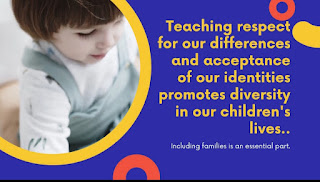What constitutes a quality early childhood curriculum?
High-quality services, equity, and accessibility of education are some of the early childhood education goals of all childcare centers and programs for enhancing children's learning, growth, and development. The main components of an early childhood curriculum related to the quality of early childhood education require ensuring that the program responds to developmentally appropriate practices (DAP) being culturally responsive.
It addresses the adequate learning standards setting out anti-bias positions for contributing to equity and social justice making education and services available and accessible to all children and their families. Then the early childhood curriculum becomes a developmentally appropriate curriculum in response to the needs and development of children.
Reaching the early childhood education standards entails the implementation of an appropriate and creative curriculum by teachers who have access to professional development and training to understand the ways children learn and develop using effective practices and instructional strategies to help them to achieve success.
Findings of research
Research has found that early childhood educators need to understand child development, social and emotional development, and family influences on children’s learning, to be knowledgeable and skilled in effective classroom practices such as planning an effective curriculum and using assessment tools to understand children’s developmental progress and to maintain a sense of professionalism and act as an advocate for child safety to offer high-quality education.Developmentally appropriate curriculum
A quality early childhood curriculum begins with the planning for the instruction based on the DAP, which is the main component of the early childhood curriculum, becoming a developmentally appropriate curriculum. These practices included in the curriculum should be based on the document of the National Association for the Education of Young Children (NAEYC) as guidance for the instruction of how children learn and develop. Planning for the instruction requires challenging and achievable opportunities for learning, understanding of individual children’s interests, strengths, and needs, and an appreciation for their student's social and cultural background relating to the contribution of brain development of the experts in neuroscience, biology, and psychology to support the uniqueness of children with or without disabilities, children who are exceptionally bright, and children whose families do not speak English at home. Another important aspect to reach quality in early childhood settings relates to offering an anti-bias education, where diversity is included and embraced ensuring equal opportunity for all children.Curriculum and philosophy
An adequate early childhood philosophy and a developmentally appropriate curriculum determine how the program helps children acquire the knowledge, skills, and dispositions appreciating their uniqueness to develop cognitively, socially, emotionally, and physically at their own pace. The philosophy and the curriculum integrate experiences based on individual and group activities, caregiving routines, interactions with peers and supportive adults, creativity, and play. It should be thoughtfully planned, comprehensive, challenging, engaging, individualized, and adapted for promoting active and creative learning and meeting children’s needs.The support of early childhood professionals
References
Center on the Developing Child Harvard University. (n.d.). Brain architecture. Retrieved from https://developingchild.harvard.edu/science/key-concepts/brain-architecture/Freeman, N. K., Decker, C. A., & Decker, J. R. (2017). Teaching and Learning in the Children’s Program. Planning and administering early childhood programs (11th ed.) (pp. 238- 267). Boston, MA: Pearson.
National Association for the Education of Young Children. (n. d.). Retrieved from https://www.naeyc.org/
_______________________
Diana A. Rivera is an Early Childhood Educator, with graduate studies in Educational Psychologist, and author of Be the voice for children. Diana believes and commits to the healthy development, growth, well-being, and learning of all children. The blog posts share ideas and knowledge about educational psychology, child and brain development, parenting, diversity, effective teaching practices, early childhood education, and care to support the empowerment of children and families.









